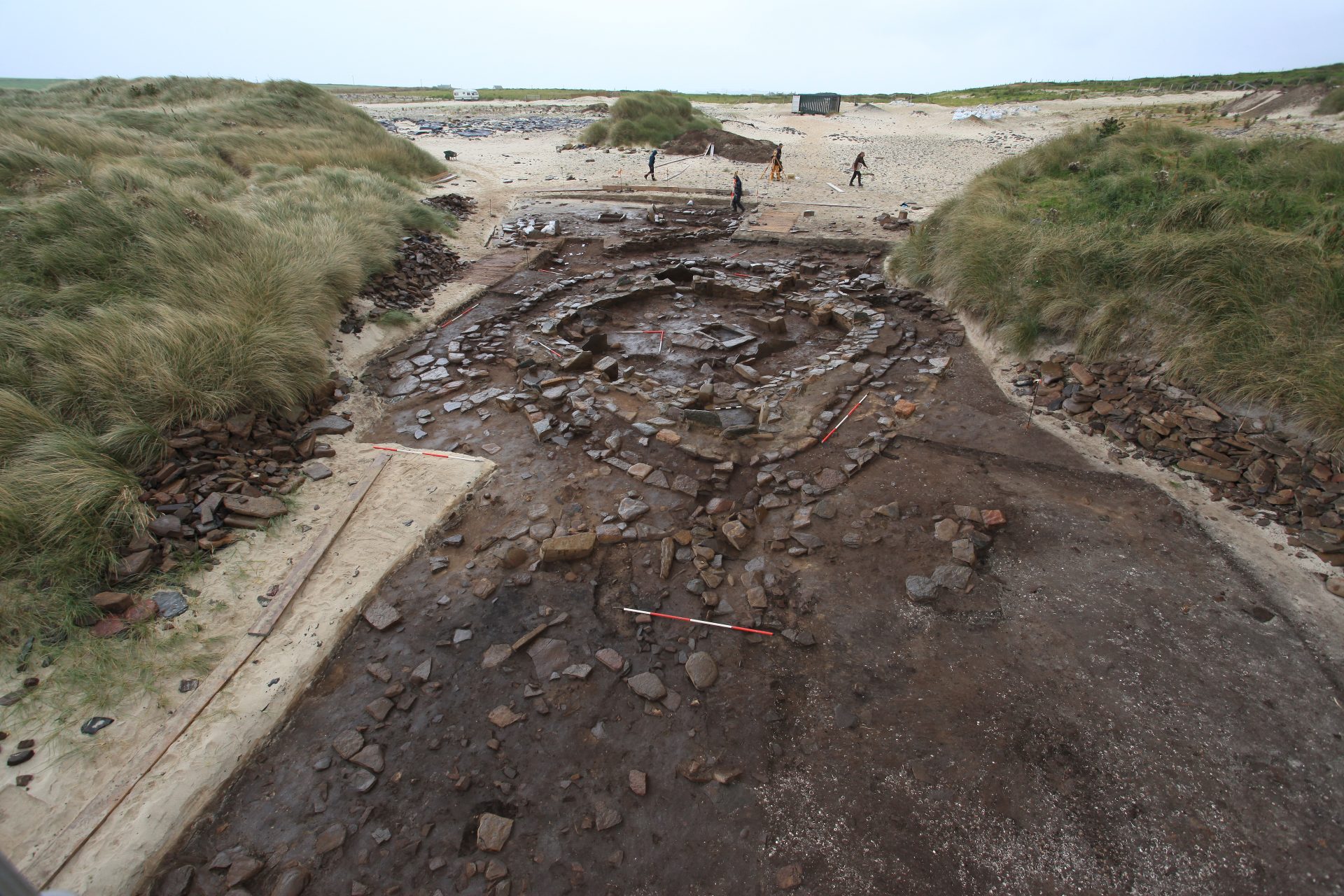A study of the Links of Notland site on Orkney has revealed that female dominated migration led to a period of prosperity for the Bronze Age community.
The Links of Notland is a 4000-year-old farming settlement near Grobust Bay on the north coast of Westray in Orkney. Previous excavations have identified over thirty-five buildings, including houses, workshops and a sauna-house, together with a cemetery containing the remains of some 105 individuals. In 2009, archaeologists uncovered a lozenge-shaped figurine called the Westray Wife, believed to be the earliest representation of a human face ever found in Scotland.
In a study published in the Journal Antiquity, researchers found that the DNA from the settlement suggested an influx of female-dominated migration, leading to a productive period in which new and more complex identities were forged. The study also shows that migrants joined established and resilient households, leading to a blending of new and old ideas.
Dr Graeme Wilson, from EASE archaeology said: “The DNA shows that the community at Links of Noltland was composed of local males and incoming females of continental descent. The DNA shows not only the fact of immigration but also the way in which it was mediated.”
The team paired the aDNA data with an analysis of Notland’s cemetery – including a large tomb used as a family vault for centuries. The archaeologists found this cemetery was grouped into three household with a long history of the male lineage, indicating that males remained and inherited whilst females moved out.
“These results demonstrate how Orkney was taking part in wider networks at a time when it was previously thought to be isolated and undergoing a kind of ‘recession’,” said Dr Wilson, noting that males would also have to leave if the population became too large. The researchers found household numbers were stable, showing that property was not split between multiple heirs.
Such impartible inheritance appears to have been a Bronze Age development, with an increasing household number seen in earlier periods. This change ensured each household had sufficient resources to survive in the tough Orkney environment.
As well as providing resilience in the face of the Bronze Age environment, this system also explains the unique pattern of migration by the Beaker people – female migration between communities was the norm in Orkney and it was no different for the new arrivals.
Additionally, the fact that the Beaker people were integrating into an established community may explain why it left so little archaeological evidence.
However, life on Orkney did not remain totally unchanged: “New and more complex identities were forged which emphasised ties to the household and the village,” said Dr Wilson, “These are seen in the cemetery where many different types of burial were found.”
There were new ways to build community and identity, bringing this increasingly diverse population together with shared rituals and activities, leading to social stability. There was also the adoption of new technologies and farming techniques. Together, this blending of new and old ideas appears to have led to a peaceful and productive period.
“Far from presenting an existential threat, as has sometimes been suggested, the influx of people appears here to have coincided with a period of social stability,” said Dr Wilson. Find out more
Header Image Credit : Ease Archaeology





